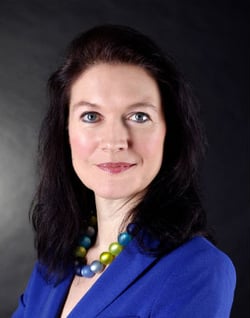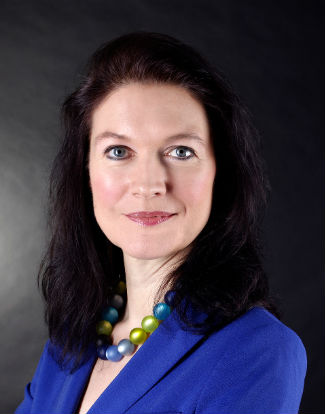
Five takeaways from the latest CSO Insights research: an interview with Tamara Schenk
CSO Insights, a division of MHI Global, conducts leading research into sales best practices, strategic trends, and the next generation capabilities driving sales performance. Their bi-monthly reports are among the most respected and in-depth studies available in the industry.
 We reached out to Tamara Schenk, Research Director for CSO, to discuss the organization’s latest research and get an insider’s view into the data. Here’s what she had to say.
We reached out to Tamara Schenk, Research Director for CSO, to discuss the organization’s latest research and get an insider’s view into the data. Here’s what she had to say.
Q: You’ve personally been deeply involved in your organization’s Sales Best Practices Study and the Sales Enablement Study. What are the most important takeaways sales leaders need to know from those studies?
TS: There are three big findings I think have to be talked about. One of them is in regard to social selling. Social selling is not new, but it continues to become more and more important, and we now have strong data on its business impact. Another is in regard to sales and marketing alignment, which is often tackled the wrong way. And then value messaging is the third big one.
Q: Let’s talk about social selling. Tell us about the data.
TS: We have data for three years in a row showing that world-class performers leverage social selling to a much higher degree than the rest, and that gap is growing. World-class performers are two years ahead of average performers. What performers have to understand is that it’s not good enough to just send people to LinkedIn Navigator training. If social selling is perceived as an add-on, it won’t work. It won’t create value. World-class performers make social selling a core part of their selling methodology, process, and work-flow. Speed, integration and adoption are critical success factors.
Q: So that’s one—social selling. What does the data say about the second point, sales and marketing alignment?
TS: Sales and marketing alignment is talked about a lot, but it’s often tackled the wrong way. People look at it from an internal perspective, in terms of aligning the departments internally, but, according to our Sales Best Practices Study, what world-class performers do, is they align it along the customer. This behavior, which we call “customer-core,” has for many years been among the Top Behaviors that have the most significant impact on sales performance. 94% of world-class performers work this “customer-core” way versus 39% of all respondents. Performers struggle if they’re looking at it from the inside out instead of the other way. Think of it this way—it’s the buying decision that creates revenue, not the sales and marketing process. That may sound hard but whatever we automate internally, the buying decision is still made by the customers. So we have to align the internal processes with the way the buyers want to make their decision to be able to influence their decision in the best possible way.
Q: And the third point, in regard to value messaging?
TS: This is a big challenge still. People in sales, including managers and executives, for decades have talked about products in order to sell products, and that’s what they’re used to. This is another buyer alignment problem. Buyers don’t buy a product, like a software solution, unless they want to achieve a business objective. And that requires the buyers to change their current state, to achieve a better future state. Salespeople have to learn to message along the lines that customers care about—it’s about creating a future vision of success together with them. Only then, can they make this change decision. No change decision at the buyer’s side, then no closed deal, but stalled opportunities. To avoid that, different value messages have to be used, tailored to buyer roles, business challenges, industries, and always along the customer’s journey. We call this dynamic value messaging, and that’s a transformational challenge in many sales performers, a core responsibility of any sales enablement discipline.
Q: It sounds like the customer journey lies at the core of a lot of what you’re finding. Can you talk more about that?
TS: Yes, that was one of the surprises of our 2015 Sales Enablement Optimization Study. We’ve always known that understanding the customer journey is important, but we were surprised at the difference it really makes. We identified that effective customer journey alignment increases revenue plan attainment by up to 10%, conversation rates by more than 30%, and quota attainment by up to 13%. These are numbers no sales leader can ignore.
Q: Were there any other surprises?
TS: One other thing did surprise us, also having to do with the customer journey, from a sales enablement perspective. We discovered a large gap between world-class performers and the rest when it comes to how well their sales enablement services (content, training, coaching) are designed from a customer perspective. When you think of all the internal and client-facing content—guided selling scripts, messaging, tools, presentations, case studies, business value justification, etc. —in many companies, all of that is still very often product-centered. Those study participants that ranked as highly effective have completely redesigned their sales enablement services around the customer perspective rather than a product perspective. In general, there is still a lot of work to be done to create effective enablement services. The customer perspective cannot be added on top of a product-centered approach in the last mile. No. The entire approach has to be redesigned. Interestingly, there are a lot of performers that have done customer journey mapping work, but that doesn’t mean they’ve translated it into dynamic sales processes and effective enablement services yet. Among the world-class performers, however, this is being done, and it’s being supported by integrated technology. I cannot wait to look into the 2016 data!
Q: Can you talk more about the technology?
TS: There’s more growth potential here, but we’re seeing a big trend in integrating enablement into CRM. This is happening more in the U.S. than in Europe, and mostly among top performing performers. What these performers are doing is putting their enablement content system inside the CRM, so that the CRM becomes the main collaboration platform. To do that, performers have to clean up their content basements, organize their materials, tailor them along the customer’s journey, and then choose or customize their technology stack to enable the integration. That’s a lot to do, but that is what world-class performers are doing.
Q: Were there any other critical areas that came to the surface in your research?
TS: Yes, there are two critical areas that are not receiving the attention they deserve. Those are analytics and the role of the sales manager. We have technology now that creates analytics like crazy, but according to our recent Sales Best Practices Study, only 30% of all respondents are highly confident in the data available from their CRM system. It doesn’t give me a good gut feeling about analytics when the performers performing them don’t trust their own data. It’s different for world-class performers, they are at 78%. It’s no good putting big data and analytics on top of faulty data. And all of that has a lot to do with CRM adoption. World-class performers drive reinforcement and adoption across the sales force and they design processes and technology to ensure the quality of their data before investing in and relying on analytics.
Q: You mentioned the sales manager role as another important finding. Can you talk more about it?
TS: It’s unbelievable for me that the front line sales manager role receives so little attention. It is a key role in the sales organization, if not the key role when it comes to execution, adoption and driving results. For the salesperson, their manager is the most important person in the organization because this role decides, based on the sales strategy, of course, what they sell, where they sell, to whom and where they sell. The data shows that we don’t invest enough in this role. Most investments go still to the salespeople. Only a very few performers even have formal programs for developing sales managers because they know about their huge impact. Why would I not invest in their leadership and coaching capability as they have a leverage effect of 8, 10 or 12 salespeople? World-class performers care about their frontline sales managers and know that dedicated programs are necessary.
Q: What are some of the key skills sales performers need to develop in their managers?
TS: Coaching is a big one. You have to coach people so they can leverage their full potential, which means they perform better. In almost 50% of all surveyed performers, according to our enablement study, sales coaching is not defined, there’s no process or even a guideline—it’s left up to the managers. But they don’t know what to do. They do what they think they should do, and that’s not a scalable approach. When we look at quota attainment in performers that don’t have a defined coaching process, they end up around 40%. Those who really focus on developing their sales managers’ coaching skills based on a formal coaching process can improve their win rates from 40% to anywhere from 50-60%.
Q: That’s huge. Besides training, is there anything else performers need to give their front line sales managers?
TS: Yes, a dedicated frontline sales manager program should also provide them with the content, such as coaching guidelines. Furthermore, they need an integrated technology landscape, where marketing, CRM, and enablement systems are integrated. They need aligned and integrated sales and marketing processes, with sales intelligence tools laid on top based on reliable data and analytics. Frontline sales managers need different data than the sales leader, they need leading indicators at each stage of the sales process much more than the lagging indicators you measure when a deal has been closed. Only then, they can coach effectively.
We were, of course, particularly interested to hear that the data backs up our belief that the marketplace needs products like our own software, that enable performers to build their process and coaching straight into the CRM in a detailed and systematic way. We appreciate Tamara’s insights into how best to do that with a customer focus, as well as her confirmation of the value of the role of the sales manager and better coaching.
You can reach out to Tamara below, or contact us with questions about how Membrain allows sales performers to achieve world-class performance by implementing recommended best practices into daily operations.
About Tamara Schenk
 Tamara Schenk, Research Director at CSO Insights, enjoyed more than twenty years of international experience in different sales roles and industries before she joined T-Systems in 2005. At T-Systems, she evolved sales enablement from a program to a strategic and global function on a VP level.
Tamara Schenk, Research Director at CSO Insights, enjoyed more than twenty years of international experience in different sales roles and industries before she joined T-Systems in 2005. At T-Systems, she evolved sales enablement from a program to a strategic and global function on a VP level.
At CSO Insights, a division of MHI Global, she equips sales leaders with research, data and expertise to help them to increase sales performance. Tamara is a recognized blogger, speaker and thought leader and a regular TopSalesWorld contributor.
Contact Tamara: tamara.schenk@csoinsights.com
LinkedIn: https://www.linkedin.com/in/tamaraschenk
https://www.csoinsights.com

By George Brontén
George is the founder & CEO of Membrain, the Sales Enablement CRM that makes it easy to execute your sales strategy. A life-long entrepreneur with 20 years of experience in the software space and a passion for sales and marketing. With the life motto "Don't settle for mainstream", he is always looking for new ways to achieve improved business results using innovative software, skills, and processes. George is also the author of the book Stop Killing Deals and the host of the Stop Killing Deals webinar and podcast series.
Find out more about George Brontén on LinkedIn







